What it says on the tin. Also see me at ItMeansApricot, my personal Tumblr, and my off-Tumblr blog, A Most Beguiling Accomplishment, which has a lot more original content.All of the captions in my posts are my own work, unless otherwise noted. So please reblog, don't repost.
Don't wanna be here? Send us removal request.
Text
I'm not very familiar with the term, but it seems to be a silk/wool blend (or rather, silk warp with worsted weft) perhaps exclusively made by William F. Reade & Sons Co. in Pennsylvania. Presumably the company started in Lansdowne, PA, which seems to have had some mills -- rayon was being made there in the early years.
Hilariously, there's some sort of textbook for men's furnishings from 1925 that describes it as "a word frequently used in advertising but having no significance other than soft, fine quality." Perhaps a bit like brand names that have become common nouns after a while?
Hey. Hey historical costuming people! Does anyone out there know what "Lansdowne" is? I know it's a (presumably trademarked) type of fabric. I've seen it in turn-of-the-century dress descriptions and I've seen advertisements for it in magazines from the same era, but I still don't know what it IS! It might be silk (or sometimes be silk), and I suspect from context clues that it's something lightweight and soft, but... is it sheer or opaque? Is it drapey? What would be the closest modern substitute?? I don't KNOW!!! Has anyone stumbled across the answer?
@marzipanandminutiae @leo-makes-history @mimicofmodes @badassindistress (and anyone else! I'm sorry I'm struggling to remember which of my mutuals are costuming people. 😅
25 notes
·
View notes
Text


Evening dress pictures!! Made my own Robe de Style and last minute made a wrap as it was gonna be cold. This is the pattern for the wrap, it took me about an hour and a half to make from cutting to wearing.

82 notes
·
View notes
Text



Accessorising the new cotehardie a little, as a treat. I don’t know why all these turned out so serious 😂
Also holy shit, all of this is entirely handsewn (including the not-visible shift and hose). Reenactor goalpost reached o.o
4K notes
·
View notes
Text
Guess who finished another corset? (it's ME)

This guy comes from a 1874 pattern (specifically this one)
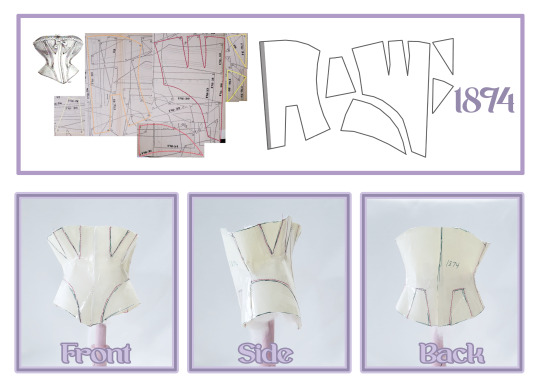
I made some not-so-minor additions to the pattern since most corsets run very small and I am not.
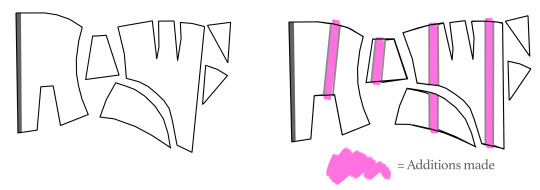
This was a rare occasion where the first mock up was way too big, but it still showed some promise!
(or maybe I just have low standards? idk)

The second mockup was made from denim, here is it straight off the sewing machine.

I took it in quite a bit because the back edges were touching which is a no-no. The gap here is much more preferable but it still had, um, issues...
I could basically fold the cups down and completely expose myself. More boning will help with that, but the gores had to be taken in, too.

This was the third fitting that day and it kind of looks th same but with more markings on it, so I did something I guess.

I made a new pattern based on that and then blah blah blah lots of sewing/cording/boning/progress.

More progress, all the boning added, binding done, etc.

Finally had enough progress to baste in closures and do another fitting. Some parts of this looked good. Other parts, however...

See typically you don't want the neckline to gape like two inches away from the boob.

So when adding the trim I also gathered that bit down. You can add a drawstring to accomplish this but the corded sections were so thick I didn't see that working well.
The end result is much, much better.

And that was about it. Obviously, there were a lot of steps to constructing this and hopefully, I will have a video up about that this weekend, but most of the pictures I took were about the fit so that's what I have to offer here.
There is some rippling, it isn't perfect by any means. But I think I can use the excuse of being out of practice for this one and I will take full advantage of that.

This is quite comfortable to wear and very light (cotton over lightweight canvas with buckram, corded, and boned elements for structure..)
I used d-rings at the center back instead of eyelets since I have always found eyelets prone to ripping out over time, no matter how I attempt to prevent that from happening. Worse case these rings will bend and can be replaced.

This was my first time trying it on since "finishing it" -- will aim for a more even lacing gap next time and wear it with a chemise, I just wanted to highlight the fit difference in the bust which is most notable when against bare skin.

I really like the line of the back and front silhouette, and think this cups my stomach better than any I've made in the past. There is still a bit of a gap at the bottom edge, so I might bend the busk a bit more to resolve that.
But overall, a much better result than I anticipated.
522 notes
·
View notes
Text
Time for June's newsletter! In it, I analyze the fashion in a Regency double portrait, and talk a little about the novella I just finished writing, Arrow Collar Man. (Plus I rec K.J. Charles.)
And as Pride month goes out, I'd like to link to The Happy Secret of It All (since I kept putting it off all month): https://books2read.com/u/470Rd7 and on Itch.

And of course Regency Women's Dress, which is not itself so queer but is written by a queer woman, so:
#writing#queer romance#cinderella retelling is the plot if you complain about me not saying anything about the plot i will lose it#the happy secret of it all#regency#historical fashion#fashion history#19th century#18th century#<- included because a couple of the pieces stretch back to 1795#1790s#1800s#1810s#1820s
13 notes
·
View notes
Text
I love that they're still putting this level of care into the costuming -- I feel like a lot of costume dramas slack off after the first or second season.




THE GILDED AGE (2022-) SEASON 3 + ART HISTORY
Giovanni Boldini - Portrait of Emiliana Concha de Ossa, 1888 Gladys Russell in Episode 1: Who Is In Charge Here?
1K notes
·
View notes
Text

Victorian Solid Sterling Silver MEMENTO MORI SKULLS Pocket Watch Chain Fob 25cm
722 notes
·
View notes
Text
Have gotten a few necessary things done and thought I would look into this!
Lady Warwick is Sarah Greville, Countess of Warwick, née Lady Sarah Elizabeth Savile (1786-1851), married in 1816. Lady Strachan is the wife of Sir Richard Strachan, née Louisa Dillon (?-1868), married in 1812.
And this is not the only satire depicting them as lovers. Here's another:

Titled "Love-a-la-mode, or Two dear friends", it depicts the ladies kissing on a bench in the park. Sir Richard and Lord Warwick in the bushes say, "Little does he imagine that he has a female rival," "What is to be done to put a stop to this disgraceful business?" "Take her from Warwick."
Despite this clearly having been a strong line of gossip - to engender not one but two cartoons - there is no mention of a scandal on Lady Warwick's wikipedia page (though the second cartoon is presented there without comment), and Lady Strachan barely gets a mention on Sir Richard Strachan's.
The Wellcome Collection's page for that second cartoon does note that Louisa "became the mistress of Lord Hertford, later settled in Naples, [and] acquired the title Marchesa di Salza". Lord Hertford, presumably the "he" who had a female rival, was a marquess and the lord lieutenant of Warwickshire, and he left her ten thousand pounds in his will in 1839. For a woman in the upper gentry to be the mistress of a man much higher up in the nobility was not extremely notable, but going to Naples and getting an Italian title is pretty unusual. Both cartoons suggest, though, that Louisa was seen as the one being seduced by Sarah, rather than Lady Strachan being the instigator of scandal.

This footnote in Don Leon shows just how public the scandal was! The writer expected informed readers to understand a reference to two women with titles starting with S and W being inside each other's chemises (smocks).
But unfortunately, that's all that survives from the gossip of the day. It's possible that public comment was attacking these men through their wives, and that their friendship was misconstrued, but it's equally possible that there was something romantic/sexual between them that was picked up on and became the subject of gossip.

Lesbian satirical etching entitled "Amorous Ladys, or Tete-a-Tete Ex-strachnary," made by William Heath, 1820.
Description:
Two ladies embrace, seated on a sofa, not noticing the entry of their husbands. One, Lady Strachan, says: "You know my dear Sarah I love you very well yet I must reserve a few Kisses for the worthy old Ad-l." Lady Warwick: "Oh never mind him, my Sweet Louisa he's undeserving your embrace's and only fit for walking the Quarter Deck." In the doorway is Sir Richard Strachan, in admiral's uniform, followed by Lord Warwick, indicated by a paper or pamphlet: 'Warwick Gude'
Source
362 notes
·
View notes
Text



Song Dynasty - Women's Hanfu Layers
Please don't mind the blindingly uncoordinated colours, I tried to use contrasting colours so you can see the layers clearly ^^;;
✿ Masterlist post ✿ Discord Server




563 notes
·
View notes
Text


My cousin got married in a “Baroque/Bridgerton” theme and they had this cute photobooth at their wedding!!
Also a good excuse to wear my anglaise again hehe
54 notes
·
View notes
Text


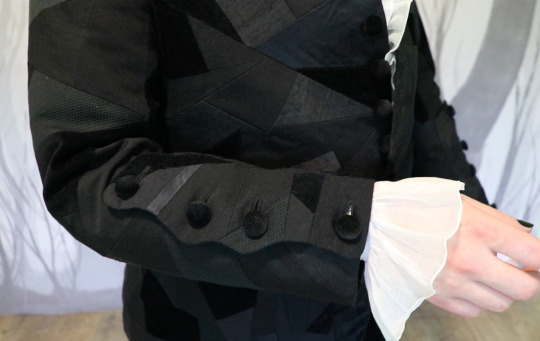
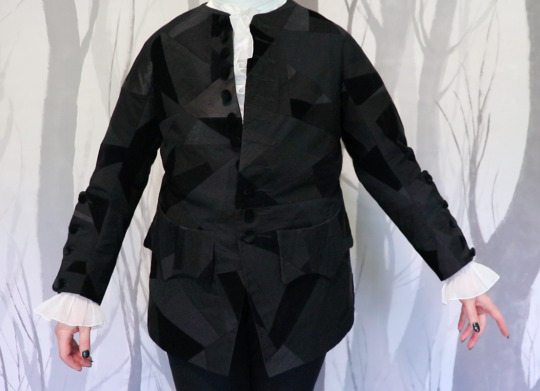
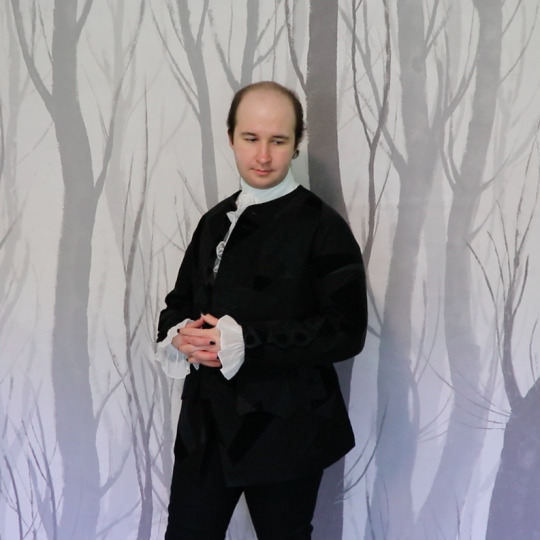

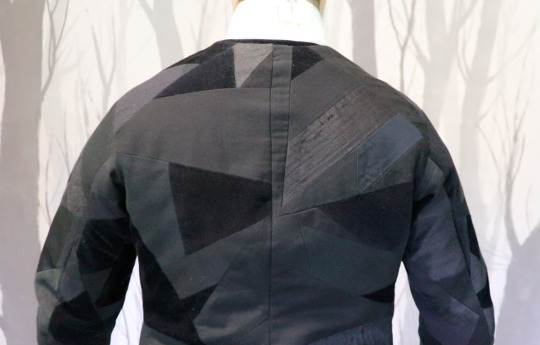


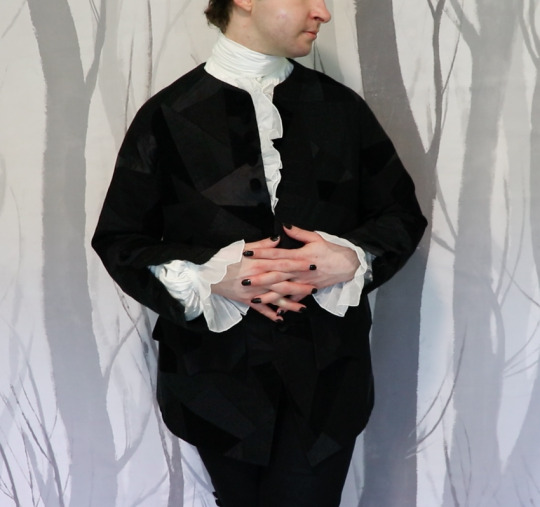
Finally got some pictures of the black patchwork jacket on me! Unfortunately the different textures didn't really show up in the full body shots on account of the background being too light, so I'll have to try some other time with a dark background.
They showed up pretty nicely in the closeups though. All the silk satin and wool and corduroy and ribbed cotton and other stuff. Mostly scraps from projects I've done over the years, plus a few little offcuts from nice black wool pants I've hemmed at work. I covered all the buttons in black cotton velvet.
This was my first time making this style of cuff and I think it turned out very nice.
942 notes
·
View notes
Text
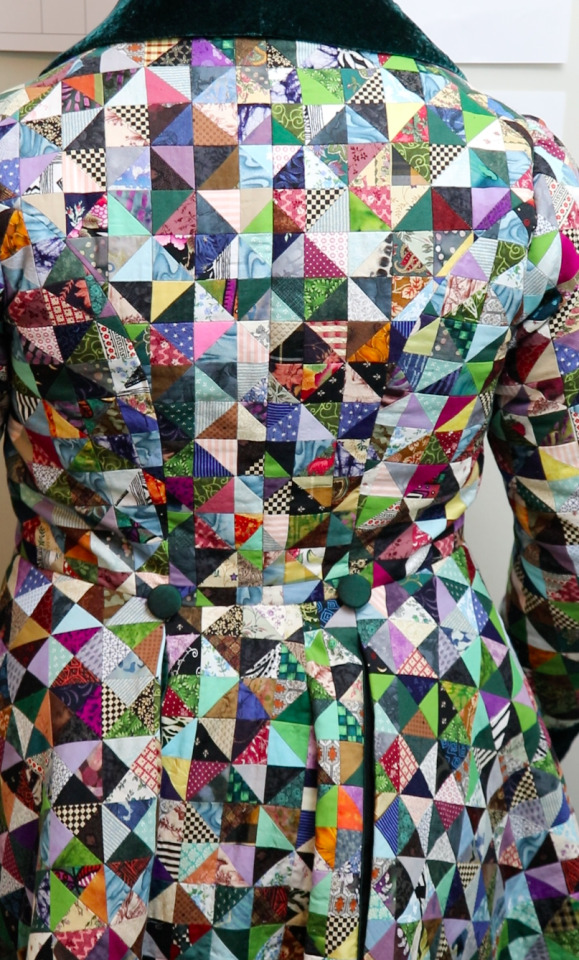
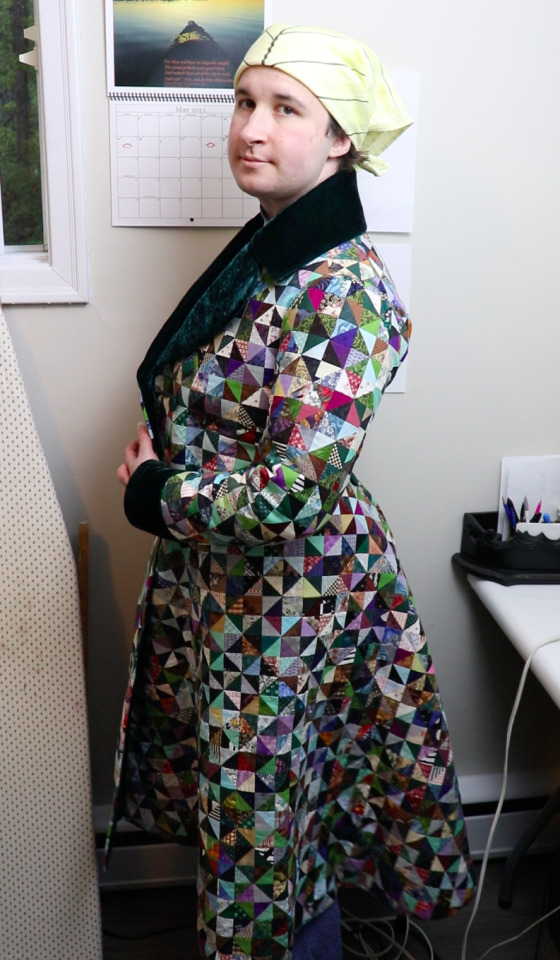
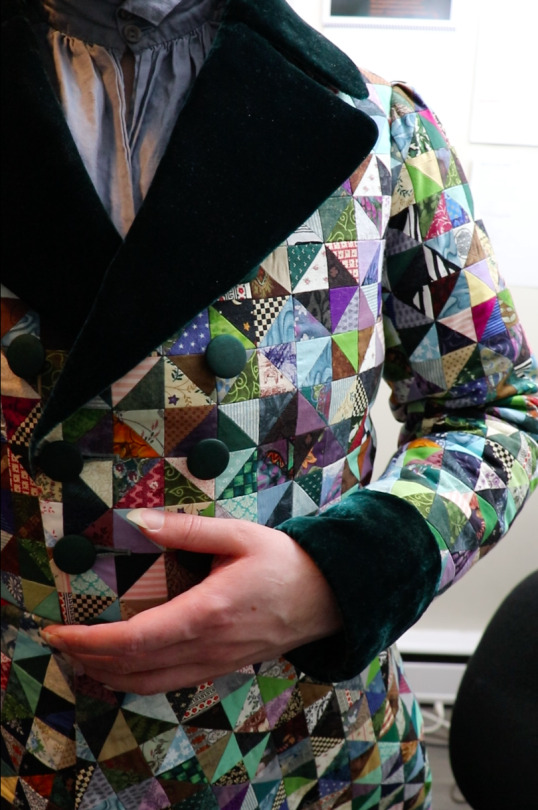

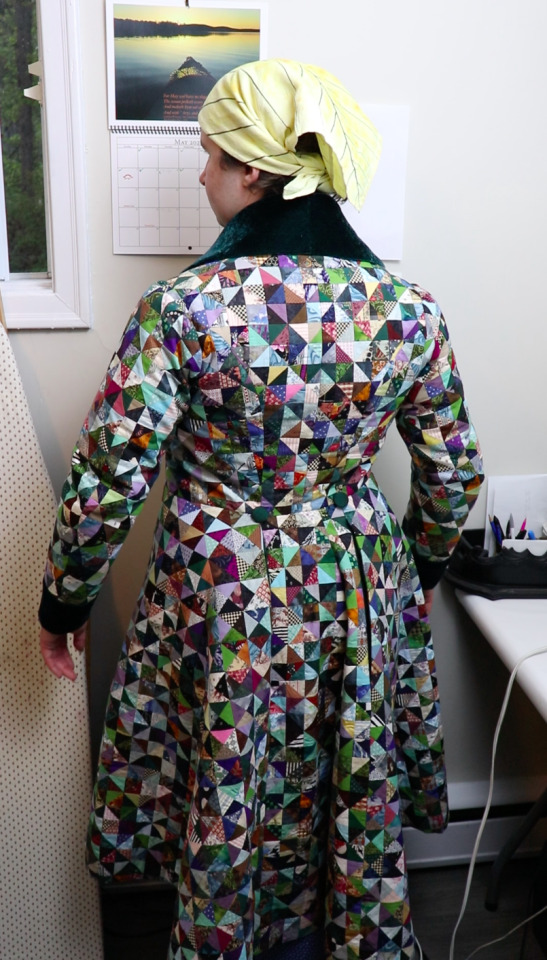



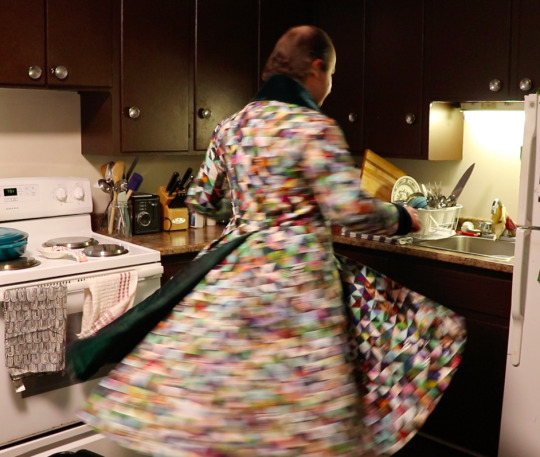
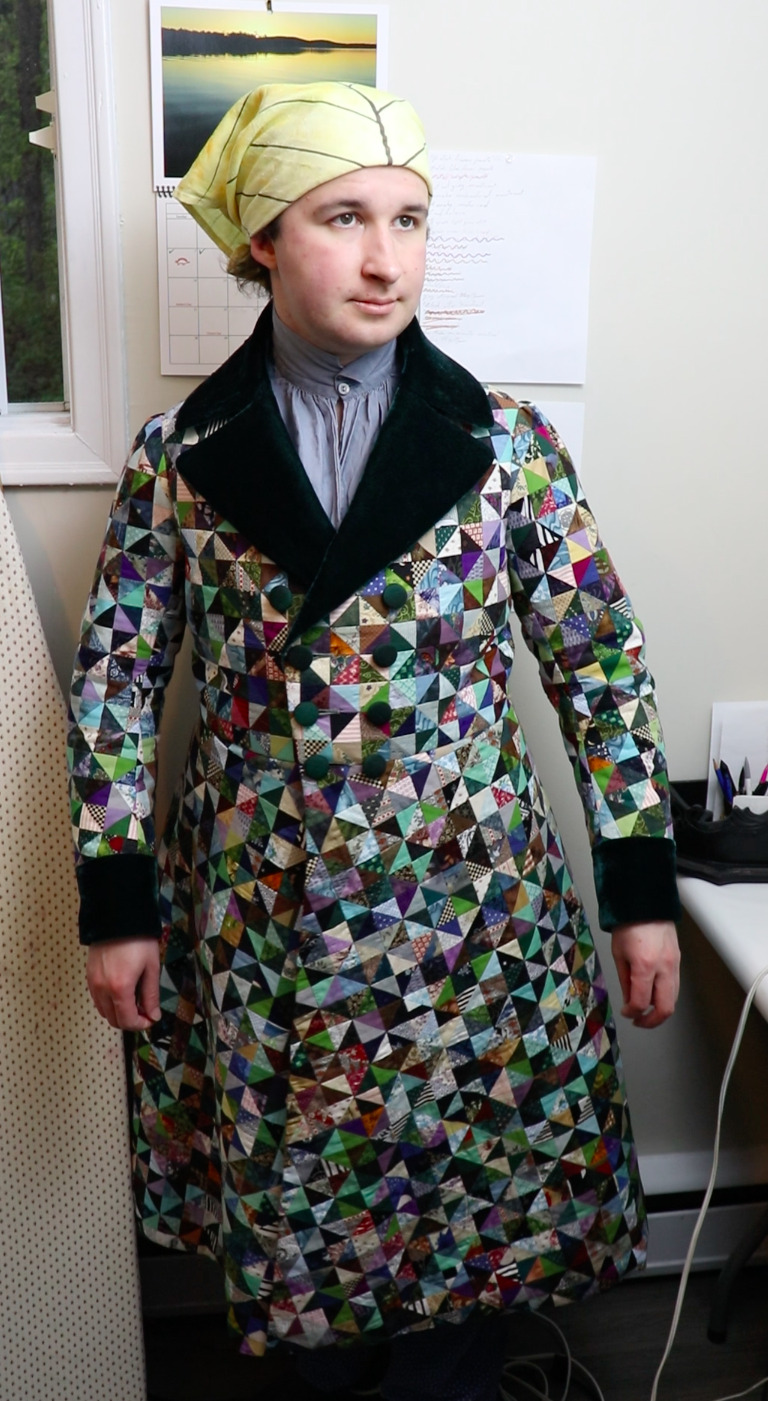

Here are some (not very good) photos of me wearing it! I'll have to get some better ones at my parents house later, because there is absolutely no good space to take photos in my apartment. I don't have any other 1830's things to go with it, and don't currently have plans to make any. I just wanted this dressing gown specifically.
Anyways! There are 6,957 triangles, all sewn together by machine, but most of the actual garment construction is by hand. The unevenness from all the patchwork seam allowances made it very fussy, and the tailoring took at least twice as long as it would have in a normal fabric. The velvet was also a challenge, being the soft drapey wobbly kind, but I managed. I accidentally made my triangles a bit smaller than the ones on the original (C. 1835, Powerhouse Museum collection.) which means there are more triangles than there had to be, but that's ok. I really enjoyed doing the patchwork, it's the most wonderfully soothing brainless task ever and I will definitely make more patchwork things.
I'm very happy with how it turned out! It's comfortable and fits pretty well, and is warm but not excessively so.
I kept timesheets for everything, and I haven't added them up yet, but once I do I'll know exactly how long all of this took.
I also filmed it, but the youtube video won't be out for quite a while, because I still have to write and record some more stuff and then edit a very very very very large amount of clips.
#daaaaaaaamn#I shared the video on bluesky and people seemed to really like it/be impressed!#reenactors#1830s#19th century
10K notes
·
View notes
Text
Yesterday I wrote an AskHistorians answer that I'd like to share with Tumblr. The question:
Is the idea of a “gay Greece” overexaggerated?
Lesbian here, and coming from a stance of curiosity and careful skepticism. Why is it believed that very many, or most, ancient Greek men were same-sex attracted (bisexual/gay)? Isn’t it true that same-sex attraction is a stable minority trait throughout time and culture? If the vast majority of men and women are heterosexual (all with the ability to engage in same-sex sex out of loneliness, etc), why is this idea so prevalent? Were the ancient pederastic poets and writers part of literary minority circles, kind of like a lot of queer people are nowadays? Looking for clarity, thank you!
My response:
This is a really interesting question, and I hope nobody minds if I approach it more from a queer theory perspective, allowing for someone more classically-minded to tackle it as a specific question of ancient Greek sexual norms with primary sources in their own answer.
The idea that "same-sex attraction is a stable minority trait" is not some kind of settled scientific fact. Sexuality is much more loosey-goosey than that! Actual individual preference with all societal baggage removed is simply and literally impossible to find -- we are shaped by the world we live in. A world where being solely attracted to "the opposite sex" is seen as the default, the norm, something that only a small number of people deviate from because they either (depending on your philosophy) were born unable to adhere to that norm or have been seduced into it blah blah. Even the concept of there being an "opposite sex" in the first place is part of a socially-constructed binary rather than something innate and biological, as there are multiple sexes when defined based on chromosomes or physicality, and multiple genders when defined based on how people see themselves. How would we define straightness absent that binary? Moreover, isn't it interesting that even people who are well-versed in the spectrum of sexuality still typically perceive "straightness" as a rigid and defined concept? Isn't it interesting that the modern cultural perception of "straightness" allows for men to have sex with other men as merely "situational homosexuality" in the absence of women, or for men to self-define as "straight" because they always top?
It's very common for people to argue that we shouldn't label historical figures as queer because they would not have understood that self-definition. It's an argument I understand, but it betrays a simplistic understanding of what "queer" means, treating it as something like a political identity today. Which, to be fair, is often how it's used colloquially. However, "queer" is an extremely useful word due to its vagueness, in comparison to pretty much all the other sexuality descriptors: "same-sex attracted" and "opposite-sex attracted" subscribe to that inaccurate binary, and "homosexual" and "heterosexual" do as well, while also being terms culturally grounded in the late nineteenth- and twentieth-century medicalization of sexuality; "gay" and "lesbian" are very specific and also quite politicized labels; "bisexual" and "pansexual" can be useful but not only also come out of a modern context but have a bunch of baggage about What This Specifically Means rooted in interpersonal conflicts within the community (we could make this even more complicated by considering "people who identify as bisexuals who identify as lesbians" but that's not what your question is remotely about); and none of this gets into the difficulties of identifying asexuality even in oneself today, let alone in people we only have records of. "Queer" is a wonderfully vague and all-encompassing term that can be used to mean "anything other than a man who is romantically and sexually attracted to women and only act on those feelings or a woman who is romantically and sexually attracted to men and only acts on those feelings", and there's a reason that it's been embraced in the fields of queer theory and queer history - it's useful specifically as a way to break out of modern paradigms.
So we go back to your original question and the issue of modern paradigms. There are people who will argue that discussing ancient Greek male sexuality in terms of queerness is wrong, because it wasn't about romance and didn't allow for any man to have a true, enduring relationship with another man. This is somewhat understandable but also misguided, and betrays a squeamishness with allowing for queerness in history. "Love between equals" simply cannot be a primary lens of understanding romantic and sexual relationships in any period in which a) people bought and sold other human beings and b) women were either literally or socially forced to marry men. If we cannot identify Greek men having sex with other men as queer because there was a required power differential and/or because it is presumed to be merely a method of sexual release, then we certainly cannot identify them as straight/heterosexual for marrying and procreating with women, a relationship with almost an equivalent power differential and typically done for the sake of making heirs. There is a massive double standard in which historical men can be called straight when they display no interest in women's lives outside of their own needs and the needs of the household, but not queer unless they actively pursue meaningful, permanent relationships with men of their own age and status.
#the responses were pretty interesting#the op turned out to be kind of an ass and probably a terf#but a lot of people simply don't have much experience in thinking about queerness like. at all#history#sexuality#queerness#queer#askhistorians
55 notes
·
View notes
Text

After three weeks of back-and-forth and a bit of confusion at the local print shop, I'm pleased to announce that June postcards for Postcard of the Month Club over on Patreon have gone out!
If you aren't a member of the PotMC tier, but would like to get this lovely group of well-dressed late-18th-century dancers anachronistically celebrating Pride, sign up before the end of the month, and they will be mailed to your home (or any address you provide me with) along with a brief handwritten note.
2K notes
·
View notes
Text




if you're looking to tablet-weave or kumihimo-braid some pride stuff, here are the options I came up with for bracelets for my husband and me. if you're on twistedthreads the name of the pattern is "ally mcbeal". go nuts
1K notes
·
View notes
Note
9 & 10 for clarence?
Oooh, thank you for asking, anon!
Describe your character's teeth.
Clarence's teeth are fine, basically, especially for a period without much orthodontia, but he notices every imperfection: his bottom front teeth overlap, one of the top incisors sticks out a little, he doesn't think his molars are fully aligned. This plagues him. He gets a bit weird about smiling in a way that shows his teeth. (Robert doesn't know all of this, he just knows that it makes him feel especially proud when he can get a real grin out of him.)
Are there any colors your character really isn't a fan of?
He's never liked vivid acid greens. He takes his job at the fabrics counter at Whitney's very seriously and does his utmost to help every customer get silk, wool, or cotton in exactly the colors that will most suit them, but he never ever recommends shades in that zone, because he doesn't believe they actually suit anyone.
ask a question!
1 note
·
View note
Text
Very willing to take questions for The Happy Secret of It All, if you've read it! And if you haven't but are curious and want to ask random questions: Patience Carmichael is in the Cinderella position, and Prince Will is her love interest.
Likewise, if you're into asking questions of characters you don't know, my current WIP is Arrow Collar Man; Robert is the protagonist and Clarence is his drag queen boyfriend.
all i do is make ask games hiiiiii
(pro tip: name some ocs in the tags when you reblog this so newcomers can ask with ease, and be sure to send an ask to the person you reblog it from!)
Has your character's worst trauma already happened, or is the worst yet to come?
How would/does your character feel about being picked up?
Does your character like candy?
Describe your character's favorite cup/glass/mug. If they don't have a specific one, make one up.
Your character has had a supremely lousy day. What do they do to cope?
Does your character get sick often?
What is/was your character's best subject in school?
Think about something traumatic that's happened to your character. How has it affected them?
Describe your character's teeth.
Are there any colors your character really isn't a fan of?
Describe a piece of clothing you have that your character would like to wear.
Describe a piece of clothing you have that your character would never wear.
What's an easy way to ruin your character's mood?
What's an easy way to cheer your character up?
Your character just woke up. What do they want right now?
Who is the most likely person to irritate your character?
What's your character like when they're nervous?
You know in cartoons when somebody has a little angel and devil on their shoulders telling them what to do? Would your character be the angel or the devil?
Is your character a picky eater?
Does your character like to argue?
What colors are most common in your character's wardrobe?
Does your character ever wear revealing clothing?
Describe your character in an unkind way, then describe them in a loving way.
Who is your character proud of?
Do people generally see your character as smart?
What's something about your character that nobody would guess by looking at them?
How much does your character talk?
Are/would your character's parents be proud of them?
How did your character's peers treat them when they were kids?
Name one (or more) of your character's favorites in any category--foods, colors, bands, movies, animals, etc.
176 notes
·
View notes